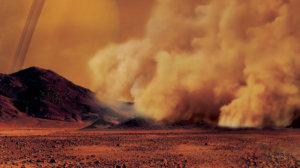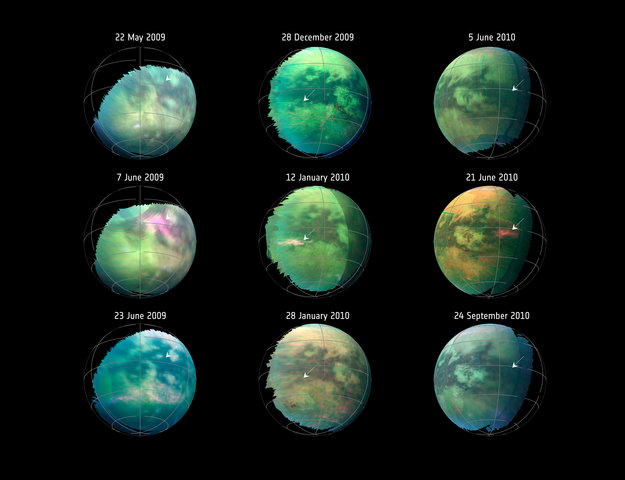The Cassini spacecraft has explored Saturn and its moons between 2004 and 2017 and the data from it now has revealed what looks like giant dust storms located in the equatorial regions of Titan, according to a release published on the NASA website. These types of observations help the scientists understand Titan’s environment.
Titan is intriguing, to say the least, and many say it bears similarities to Earth – it has a substantial atmosphere and it is, as far as we know, the only other celestial body aside from our own planet that hosts stable bodies of liquid. The only difference is that Titan’s liquid reservoirs are mostly filled with methane and ethane.
The weather on Titan, just like on Earth, changes from season to season. When the Sun crosses Titan’s equator, massive clouds form in the tropical regions and cause big methane storms, one of which Cassini observed too, during one of its Titan flybys.
“Titan is a very active moon. We already know that about its geology and exotic hydrocarbon cycle. Now we can add another analogy with Earth and Mars: the active dust cycle, in which organic dust can be raised from large dune fields around Titan’s equator.”
– Sebastien Rodriguez, astronomer at the Université Paris Diderot, France and the paper’s lead author.
Initially, the researchers, when confronted with the data, assumed the dust storms were actually those methane storms, just that the time frame for their appearance did not fit previous data.
After exhausting every other possibility and carefully analyzing the data, the only remaining explanation was that the spots they identified could only be clouds of dust that were raised from the dunes.
“For the moment, the only satisfactory explanation for these strong surface winds is that they might be related to the powerful gusts that may arise in front of the huge methane storms we observe in that area and season,” concluded Rodriguez.

Artist rendition of how a dust storm on Titan might look like
The phenomenon can also be observed on Earth in yet another way Titan resembles our planet – it’s called ‘haboob‘ and can be observed when giant dust clouds appear before storms that happen in arid areas.
The winds on Titan could transport the dust raised from the dunes on great distances, which implies the sand can be set in motion, which made the scientists believe that Titan’s equatorial regions are constantly changing.
Related: ✍️Hubble Captured The Ongoing, Bigger-Than-Earth Auroras On Jupiter✍️
Follow TechTheLead on Google News to get the news first.





















